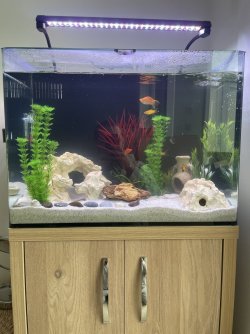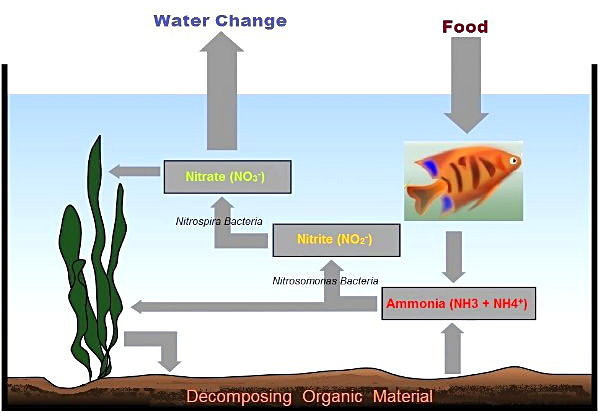JoeFinn1997
New Member
Hello, I recently acquired the Aqua Nano 60 tank and I have had this running for 3 days now. The tank currently houses 4 mollys and 4 platys. I mainly have some queries as I am new to the hobby and want to ensure I am doing everything possible to give the fish a happy and healthy life in the tank.
My queries are as follows:
1.) How often should I be feeding the fish? I have been doing this once a day and providing them with 3 pellets each (as advised by the store). However, I just want to check this is ok and is not over feeding the fish.
2.) the tank comes with a built in filtration system and pump. The pump is currently pointed towards the surface of the water to increase water movement. However, the pump also comes with a Venturi attachment. Is the Venturi necessary or can I continue with the pump as is?
3.) Will I require any air rocks for additional oxygenation or will the pump suffice?
4.) How often should I be testing the water? I’ve tested a few times so far and all parameters seem ok. However, I have only been using strips and not the lab test kits. Is it worth switching to the lab kit for more accurate results?
5.) when do you recommended my first water change and also any cleaning of the filter? I seem to have mixed opinions as some people suggest leaving those while the tank cycles and the beneficial bacteria increases. However, some people suggest a 25% water change after 2 weeks.
Apologies for the long and probably very amateur questions. However, I want to learn along the way and ensure I can do the best I can for this new hobby and also ensure rhe fish live a healthy life!
Thanks all,
Joe
My queries are as follows:
1.) How often should I be feeding the fish? I have been doing this once a day and providing them with 3 pellets each (as advised by the store). However, I just want to check this is ok and is not over feeding the fish.
2.) the tank comes with a built in filtration system and pump. The pump is currently pointed towards the surface of the water to increase water movement. However, the pump also comes with a Venturi attachment. Is the Venturi necessary or can I continue with the pump as is?
3.) Will I require any air rocks for additional oxygenation or will the pump suffice?
4.) How often should I be testing the water? I’ve tested a few times so far and all parameters seem ok. However, I have only been using strips and not the lab test kits. Is it worth switching to the lab kit for more accurate results?
5.) when do you recommended my first water change and also any cleaning of the filter? I seem to have mixed opinions as some people suggest leaving those while the tank cycles and the beneficial bacteria increases. However, some people suggest a 25% water change after 2 weeks.
Apologies for the long and probably very amateur questions. However, I want to learn along the way and ensure I can do the best I can for this new hobby and also ensure rhe fish live a healthy life!
Thanks all,
Joe




